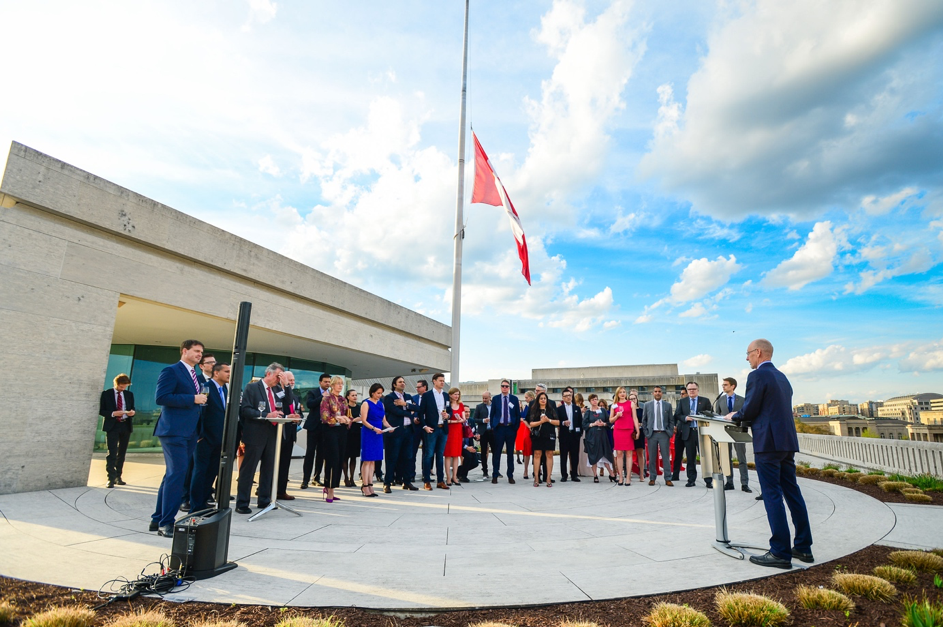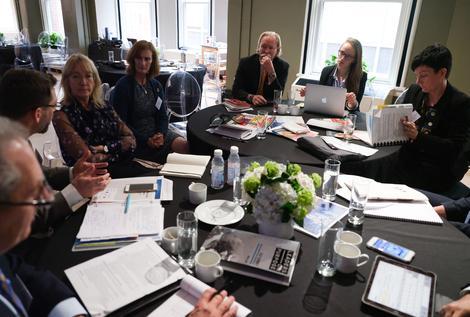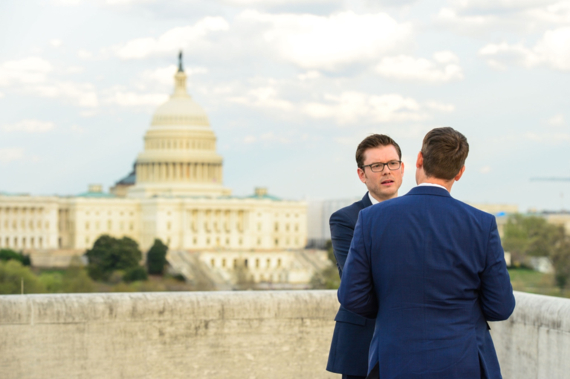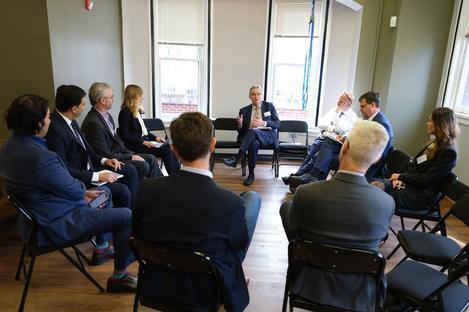
How Scenario Thinking creates Leadership (CEO summit 2019, Washington)
In April 2019 the CEO Summit was held in Washington DC, where “Leadership for the 21st Century & Beyond” brought together some of the world´s top visionaries and leaders to accelerate a new kind of leadership at the forefront for a new business logic – integrating purpose and profit.
With shared visions of the future, leaders can help organizations to bring their visions cognitively closer to understand the future. Scenario strategizing can help organizations to know precisely where they want to go and how to achieve the right goals to get there.
Our Manager Dr. Sebastian Knab was invited to share his insights on scenario thinking. He talked about the new opportunities of leadership, partnerships and the shift from business as usual. In his talk, Sebastian focused on scenarios as something you need when encountering uncertainties, the need for thinking long-term and contributing to systemic change.
“One thing about foresight is long-term thinking, where companies must shift their focus from near-term pressure to achieving goals longer than two years ahead. This can seem uncomfortable to some, but as we are faced with socio-technical transitions, foresight comes into play.”
Dr. Sebastian Knab
Integrating sustainable development and profit is not the most intuitive thing leaders address. It’s clear that leaders tend to understand long-term thinking but are often forced to address the short-term pressure due to shareholders, environment or competition. Leaders often understand that they need to collaborate through partnerships to make it happen, but it can be difficult to overcome the structures and setups. For the beginning, the challenge is to create a bridge across this gap. Then foresight can contribute.
Foresight methods allow companies to gain and understand the systemic change that happens in different environments by integrating different perspectives.
Methods like scenarios analysis are specifically designed to understand systemic change. For instance, it can be used to analyze changes in one area to discover possible impacts on other areas.
How scenario-based strategizing can boost your business
The special feature about this foresight method is to combine the company’s external and internal views. The scenario-part observes external action and how the world around your company acts, while the strategizing addresses internal issues. By reconciling long- and short-term views, we can foresee scenarios for 2030/2035. The purpose of it is to be prepared for the future, by creating strategies for the presence.
“At the CEO Summit, the leaders were introduced to the new business logic, which states: If you want to develop business, it is not about incremental changes, but about systemic change.”
Dr. Sebastian Knab
Sebastian shares his 3 key take-aways from the CEO Summit with us:
- Align your organization to where the world is going.
- When this is hard to do alone, partnerships are key!
- Every organization needs a long-term strategy and this needs to be aligned with other actor´s actions, where scenario strategizing come into play.
Sebastian shares his 3 key learnings about what makes a purpose driven leader:
- Do more sense-making and are more context aware.
- Utilizing collective intelligence and decision making!
- Cooperate to share scarce resources focusing on ideation and using filters to figure out which idea to pursue.
This article is inspired by Dr. Sebastian Knab’s talk at the CEO summit 2019 in Washington.




